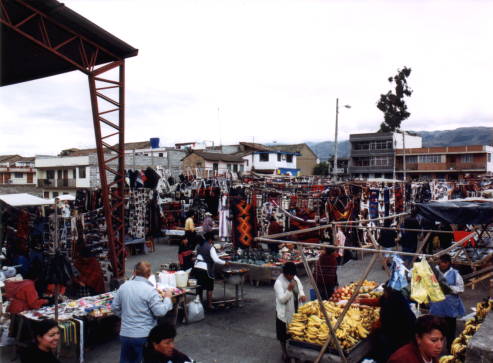

Located about 70 kilometers southwest of Quito in the Cotapaxi region, the town of Saquisili is host to one of Ecuador's Indian Markets. Not as renowned or as festive as Otavalo, Saquisili is focused on selling to locals, rather than tourists. Thursday is the most active day of the week for this market, which sprawls for several blocks in distinct sections.
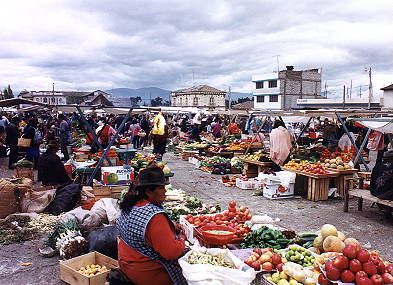 Llamas, pigs, cows, lambs, goats and chickens mill about the animal
market, almost wearily as though they know their fates.
Llamas, pigs, cows, lambs, goats and chickens mill about the animal
market, almost wearily as though they know their fates.
The Otavaleno Indians seem to dominate the textile section with their bright shawls, rugs, and sweaters. The most prosperous indigenous group in Ecuador, Otavalenos not only travel Ecuador to sell their wares but all over the world, while maintaining their traditions and way of life.
The produce market are awash in colours and scents of local foods. We were dazzled by the variety of potatoes, ranging from tiny black spuds to large purple ones; just a fraction of the 1400 varieties found in Ecuador. Local food stands feature fast food to shoppers, from fried breads, to roast pig heads, to a whipped meringue dessert served in ice cream cones. The tropical fruits and vegetables add colour to the surroundings. The air is thick with the smells of earthy potatoes, coriander, and fried breads.
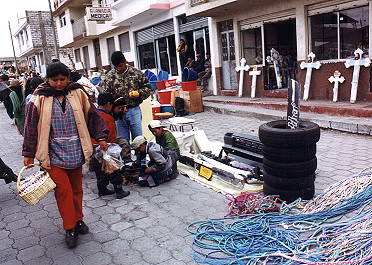 Strewn throughout, you can find stands that sell furniture, car bumpers,
machinery parts, broken radios, crucifixes and other things you didn't know
you couldn't live without.
Strewn throughout, you can find stands that sell furniture, car bumpers,
machinery parts, broken radios, crucifixes and other things you didn't know
you couldn't live without.
Most of the locals ignored us unless they had "tourist" oriented goods for sale. The women (the majority of the local shoppers) would shuffle past us, straining under their incredible loads on their back; huge sacks of potatoes or flour, or their tired children. Some would stare at us, or hide, as we wielded our cameras, and Trisha wondered if this was just like someone walking into our local grocery store and taking pictures commenting on how "bonito" everything was. The children would stop and stare, their adorable brown eyes wide with curiosity.
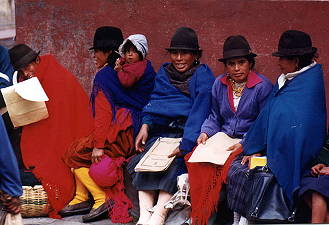
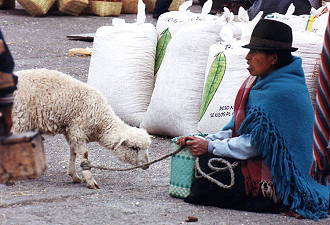
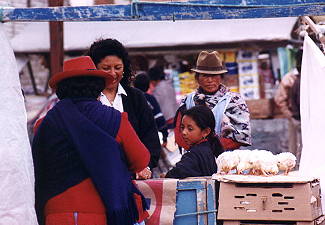
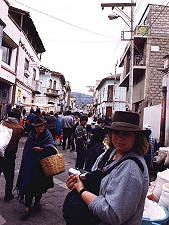
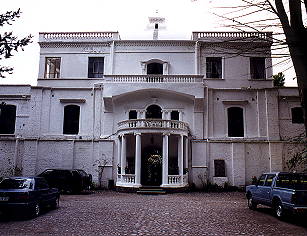

|
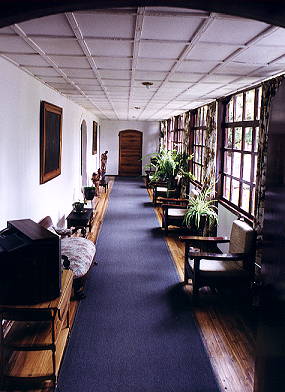
|